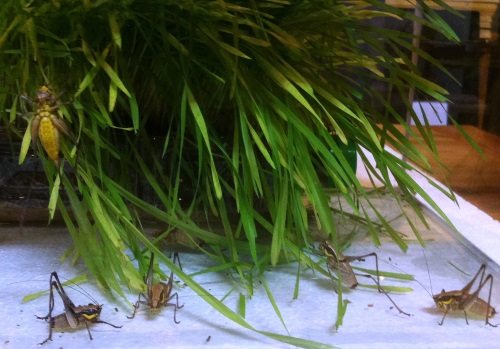People in Africa, Japan, China and certain Southeast Asian countries are known to consume insects and bugs as part of their daily diet, delicacy foods or snacks.
In Africa, pan-fried or barbequed grasshoppers are eaten whole and Japanese eat them with a sweet and sour sauce, Dror Tamir, CEO of Steak TzarTzar, tells Food News International at a press tour in Israel this month.
Protein shakes from grasshoppers
Besides offering edible grasshoppers to the East African market, the company is working with the head physiologist and nutritionist at Wingate Institute, Israel’s National Centre for Physical Education and Sport, to develop a protein powder made of grasshoppers for athletes in the western markets such as the US, Europe, Brazil, as well as Asia.
“Whey is the main source of protein in the sports industry, with eggs and soy as viable alternatives. Manufacturers are looking for new sources of protein in order to provide different products,” said Dror.
However, most protein powders available in the market contain single amino acids for muscle building.
“What about protein powders for professional athletes such as football and basketball players? Our protein shake containing the powder from grasshoppers will feed all athletes to recover from their sport practices,” said Dror.
“And as manufacturers in the sports industry are considered the early adopters, they will try ingredients that would improve performance and abilities.”
“To make protein powder, grasshoppers are frozen and dried. A proprietary chemical process will extract the nutrients from the insects,” said Dror.
Farming grasshoppers
Pesticides are often used in harvesting grasshoppers in the wild or from farmlands with crops such as rice and maize.
This worries regulators on how safe and healthy the insects for human consumption.
“Japan imports grasshoppers from Korean, China and Thailand, as there is a low supply of grasshoppers in the country due to the use of pesticides in rice cultivation rice,” said Dror.
“People in the Middle Eastern countries such as Saudi Arabia, Yemen, Kuwait are consuming locusts but the governments are preventing such consumption because pesticides are used in the process of killing the seasonal swarm of locusts for crop protection.”
“Farmers would then collect the dead insects from the desert for sale in the market,” he said.
These food safety concerns has led the company and business partners from Jordan and Palestine “to develop a facility in Jordan where grasshoppers can be farmed in a controlled and safe manner”, said Dror.
This would also ensure a constant, year long supply of grasshoppers.
Nutrients from grasshoppers
“There are about 1,900 types of insects consumed around the world but we were more interested in insects that are both eaten and traded as commodities in the market. We focused on the East African market – Uganda, Kenya, South Sudan, Tanzania and Rwanda – that has a huge demand for grasshoppers, which are called Nsenene. They are abundant in four to six months a year,” said Dror.
“In Uganda, the price of grasshoppers pound for pound is double than that of cattle. And there is almost no cost to supplying the insects, which are collected from the wild into trucks for sale, especially in the high season, which happens twice a year.”
Dror said each grasshopper is packed with whole protein, amino acids, lipids (oleic-acid, Omega-3 and Omega-6), vitamins and minerals (iron, magnesium, zinc, folic acid, B12) and dietary fibers.
It does not have saturated fat and cholesterol.
“And 70% of the final product is protein. This is amazing,” he said.
Breaking the psychological barrier
New Nutrition Business says insects as an ingredient in everyday foods could be a US$350 million business in the US and Europe within 10 to 15 years.
However, in the UK, 65% of 2,000 consumers surveyed by Canadean in 2014 would not be willing to try foods made from processed insects.
The research company concluded that heavy marketing is needed to encourage people in the West to consume insects for protein.
In the same year, Food News International found from Innova Market Insights that the consumption of insects would be higher in countries and cultures where insects are generally eaten.
“We think that physiological barrier to eating grasshoppers for people is so huge that we do not want to confront it. It is really hard to change their behavior that requires a lot of investment. Build your business in markets that have demand for insects,” said Dror.
“Once you have business in Africa, Japan and the protein powder industry, you are not small anymore. You can start educating people, build your brand and generate more awareness.”
With all eyes on the market, the company has a facility to grow grasshoppers in Israel, while considering having another in Africa if demand is more than what it can manage in Israel.
“We want to control and keep the core of the business close. The core of the business is not just harvesting the grasshoppers. It is how to get the insects to breed, lay eggs and obtain the right nutrition,” said Dror.










